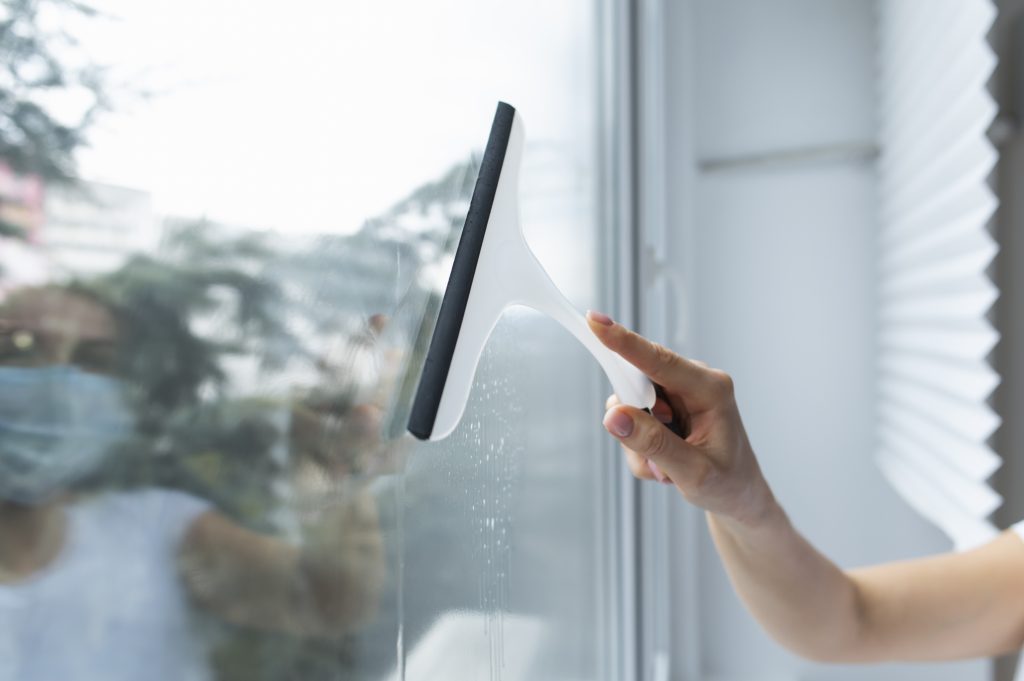Have you ever spent time scrubbing your windows, only to step back and see streaks, smudges, or leftover grime? You’re not alone. Window washing may seem like a simple task, but getting that streak-free, crystal-clear shine can be frustrating if you don’t use the right techniques.
The good news? Professional window cleaners have mastered the art of spotless windows, and with the right tools and methods, you can too. Whether you’re tackling everyday dust and fingerprints or battling stubborn water spots and outdoor grime, a few expert tricks can make all the difference.
In this guide, we’ll break down everything you need to know about window washing, from the best cleaning solutions and tools to step-by-step techniques that guarantee a streak-free finish. We’ll also cover common mistakes to avoid and when it might be time to call in the pros.
If you’re ready to stop wasting time on ineffective methods and start enjoying perfectly clear windows, let’s dive in!
Why Clean Windows Matter More Than You Think

It’s easy to overlook your windows until they’re covered in streaks, dust, or water spots. But window washing isn’t just about making your home look nice—it actually has several practical benefits you might not have considered.
Brighter, More Inviting Spaces
Clean windows let in more natural light, instantly making your home feel brighter and more open. Over time, dirt, pollen, and grime create a dull, hazy film that reduces sunlight and affects the ambiance inside. Regular window washing ensures your home stays well-lit and inviting, improving both mood and energy efficiency.
Extending the Life of Your Windows
Windows are constantly exposed to dirt, hard water stains, and even pollutants that can degrade the glass and frame. If left unchecked, mineral deposits and debris can etch into the surface, leading to permanent damage. Regular window washing helps prevent buildup, protecting your investment and saving you from costly replacements down the road.
Better Energy Efficiency
Believe it or not, dirty windows can impact your home’s energy efficiency. When grime builds up, it blocks sunlight from naturally warming your space, forcing you to rely more on heating in colder months. Clean windows improve insulation and allow the sun’s warmth to help regulate indoor temperatures, which can even lower your energy bills.
Boosting Curb Appeal
Whether you’re hosting guests or thinking about selling your home, sparkling windows make a big difference in curb appeal. Smudges and streaks are one of the first things people notice from the outside, and clean windows give the impression of a well-maintained home. For businesses, spotless windows create a more professional and welcoming environment for customers.
Making Window Washing a Priority
While it’s easy to put off window washing, the benefits go far beyond aesthetics. Regular cleaning keeps your windows in top shape, improves your home’s efficiency, and enhances the overall look and feel of your space.
Now that you know why clean windows matter, let’s dive into the best tools and cleaning solutions to get the job done right!
The Best Tools & Cleaning Solutions for Window Washing
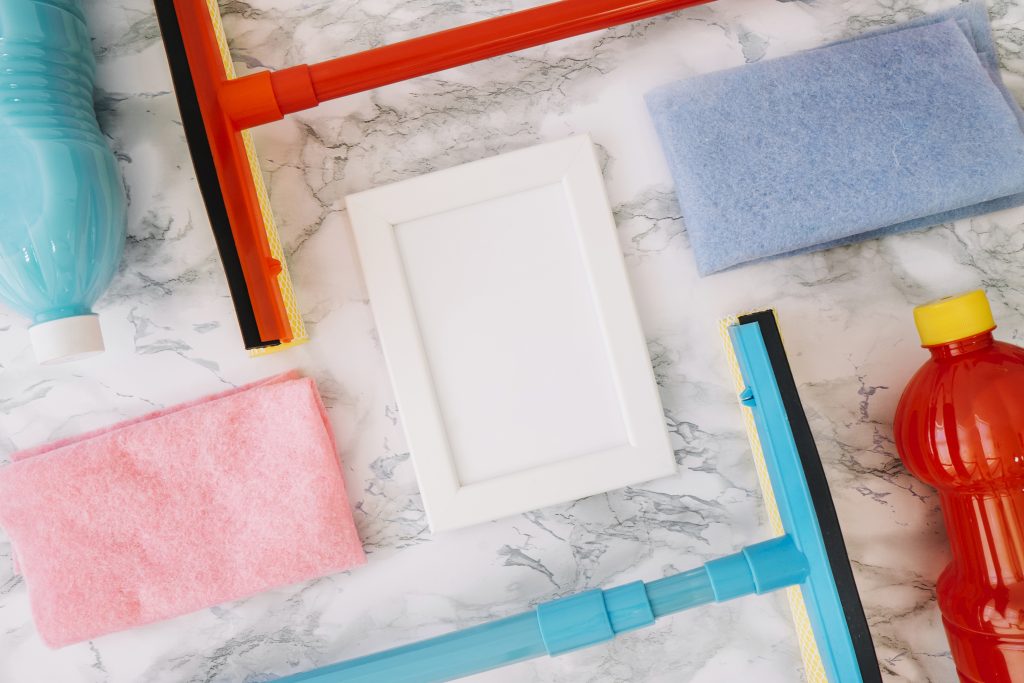
Have you ever wondered why professional window washers get flawless, streak-free results while your windows still show smudges and residue? The secret isn’t just technique—it’s also about using the right tools and cleaning solutions. Choosing the best supplies can make all the difference when it comes to effective window washing.
Essential Tools for Streak-Free Windows
Before you start scrubbing, make sure you have the proper tools on hand. Using the wrong equipment—like paper towels or standard rags—can leave lint and streaks behind, making your job twice as hard.
Here’s what the pros use for perfectly clear windows:
- Squeegee: The #1 tool for achieving streak-free windows. A good-quality squeegee removes cleaning solution evenly without leaving behind streaks or smudges.
- Microfiber Cloths: Unlike paper towels, microfiber cloths trap dirt without scratching the glass or leaving lint behind.
- Bucket & Scrubber: A bucket with a mop-style scrubber or sponge is great for tackling larger windows, especially outdoors.
- Extension Pole: If you’re cleaning tall windows, an adjustable pole can save you from climbing a ladder.
- Razor Blade Scraper (for tough stains): Used carefully, a scraper can remove paint splatters, tape residue, and stubborn debris without damaging the glass.
Best Cleaning Solutions: DIY vs. Store-Bought
Choosing the right cleaning solution is just as important as using the right tools. Here are some tried-and-true options:
- DIY Vinegar Solution: A mix of one part white vinegar and one part water is an effective and eco-friendly way to dissolve grime and prevent streaks.
- Dish Soap & Water: A few drops of dish soap in a bucket of warm water can help break down grease and dirt.
- Commercial Window Cleaners: If you prefer ready-made solutions, look for ammonia-free glass cleaners to avoid streaks and protect tinted windows.
What to Avoid
Not all cleaning methods are created equal. Avoid using:
- Newspaper: Once considered a go-to, modern newspapers contain ink that can transfer onto glass and leave a mess.
- Paper Towels: These leave lint behind and don’t absorb cleaning solution evenly.
- Ammonia-Based Cleaners on Tinted Windows: Ammonia can damage window tints over time, causing them to fade or bubble.
Setting Yourself Up for Success
With the right tools and cleaning solutions, window washing becomes much easier and more effective. Now that you know what works best, let’s dive into the step-by-step process to ensure a streak-free shine every time!
Step-by-Step Window Washing Guide for Streak-Free Shine
Now that you have the right tools and cleaning solution, it’s time to put them to work. Window washing may seem straightforward, but using the right technique is what separates streaky, cloudy glass from a perfectly clear shine.
Start with the Right Conditions
Believe it or not, the time of day and weather play a big role in how well your windows turn out. If you’ve ever cleaned a window only to see streaks appear minutes later, the culprit might not be your technique—it could be the sun. Direct sunlight dries cleaning solution too quickly, leaving behind streaks before you have a chance to wipe them away. A cloudy day or a time when the sun isn’t shining directly on your windows is ideal for a flawless finish.
Prep Before You Clean
Before applying any cleaning solution, give your windows a quick dust-off. Outdoor windows often collect layers of dirt, pollen, and cobwebs, while indoor windows accumulate dust and fingerprints. A quick wipe with a dry microfiber cloth or a soft brush helps remove loose debris so you’re not just smearing dirt around when you start cleaning.
The Pro Technique for Streak-Free Windows
A common mistake people make when washing windows is wiping in circles or using a back-and-forth motion. While it might seem like a thorough approach, it actually spreads dirt unevenly and increases the chances of streaking.
Professional window cleaners swear by the S-pattern technique. Instead of wiping randomly, start at the top corner of the window and move the squeegee in a smooth, continuous “S” motion across the glass. This method evenly distributes the cleaning solution and ensures you’re not leaving streaks behind.
After using the squeegee, wipe down the edges with a dry microfiber cloth. This step prevents small water droplets from running down and leaving marks after you’ve finished.
Dealing with Stubborn Stains and Water Spots
Some windows, especially those exposed to hard water, develop stubborn spots that don’t come off with regular cleaning. In this case, a mix of vinegar and water left to sit for a few minutes can help break down mineral deposits. If needed, a carefully used razor blade can remove stuck-on grime without scratching the glass.
By following these steps, window washing becomes less of a chore and more of a simple, effective routine. With the right conditions, a little prep, and a proper technique, you’ll have streak-free windows that stay clean longer. Next, we’ll cover how cleaning indoor and outdoor windows requires slightly different approaches to get the best results.
Indoor vs. Outdoor Window Washing: Key Differences
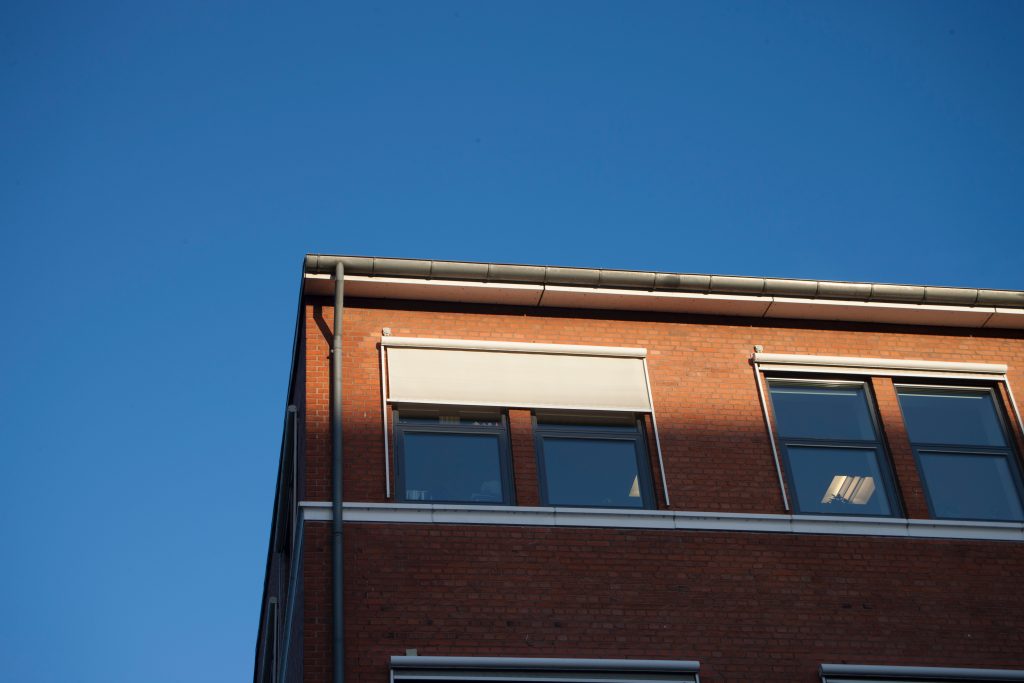
Cleaning windows inside your home is a much different task than tackling the dirt and grime on exterior glass. While the goal is the same—streak-free, spotless windows—the techniques and challenges vary. Adjusting your window washing approach for indoor vs. outdoor surfaces can make the process more efficient and effective.
Indoor Window Washing: Keeping It Mess-Free
Indoor windows tend to collect dust, fingerprints, and smudges rather than heavy dirt buildup. The key to cleaning them effectively is using minimal liquid to avoid drips and streaks. A spray bottle with a vinegar-water mix or a streak-free glass cleaner works best. Lightly mist the surface and wipe in smooth, even strokes with a microfiber cloth or squeegee. Since you don’t have the option to rinse indoor windows, it’s important to wipe away excess cleaner to prevent streaks. For high-touch areas, a quick polish with a dry microfiber cloth can keep windows looking fresh between deep cleans.
Outdoor Window Washing: Handling Tougher Buildup
Exterior windows face more grime—pollen, dust, rain streaks, and even bird droppings. A bucket and scrubber work better than a spray bottle. Rinse the window first, scrub with a gentle cleaner, and use a squeegee in the S-pattern to prevent streaks.
For hard-to-reach windows, an extendable squeegee pole can be a safer alternative to ladders. Regular window washing keeps outdoor glass clear and prevents long-term damage from dirt buildup. Next, we’ll explore how often you should clean your windows for the best results year-round.
How Often Should You Wash Your Windows?
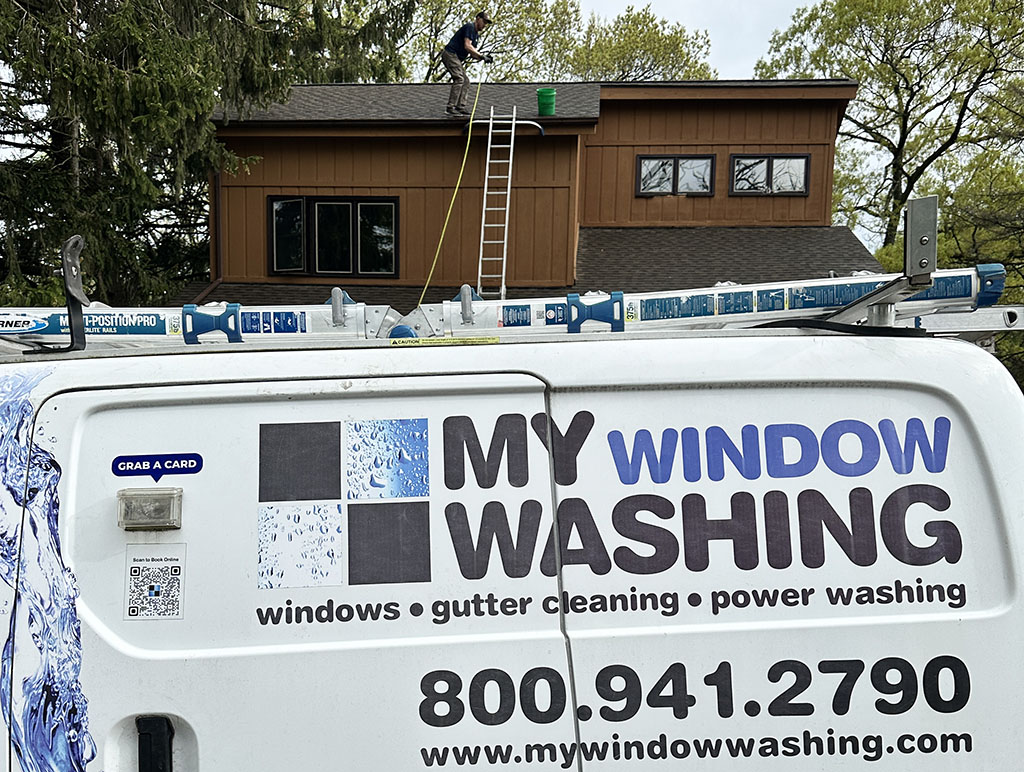
Keeping your windows clean isn’t just about looks—it’s about maintaining their quality and longevity. But how often should window washing be part of your routine? The answer depends on several factors, including your home’s location, weather conditions, and how much dirt and grime your windows are exposed to.
General Guidelines for Window Washing
For most homes, a thorough window washing twice a year—once in the spring and again in the fall—keeps windows looking clear and prevents dirt buildup. However, if you live in an area with frequent storms, high pollen counts, or heavy pollution, you may need to clean them more often.
Businesses, storefronts, and homes in high-traffic areas typically require monthly or even weekly window washing to maintain a polished appearance.
Seasonal Window Cleaning Tips
- Spring & Summer: Pollen, dust, and rain can leave streaks and residue on windows. A good deep clean in early spring removes winter grime, while a touch-up mid-summer keeps them clear.
- Fall & Winter: Leaves, dirt, and cold-weather condensation can make windows look cloudy. A fall cleaning prepares your windows for the winter months, while a post-winter wash removes salt and moisture stains.
When to Schedule an Extra Cleaning
If you notice hard water stains, bird droppings, or a cloudy film forming, don’t wait until your next scheduled cleaning. Regular window washing prevents permanent damage and keeps your home looking its best year-round.
Also read: Signs You Need Professional Window Cleaning
DIY vs. Professional Window Washing: Which is Right for You?
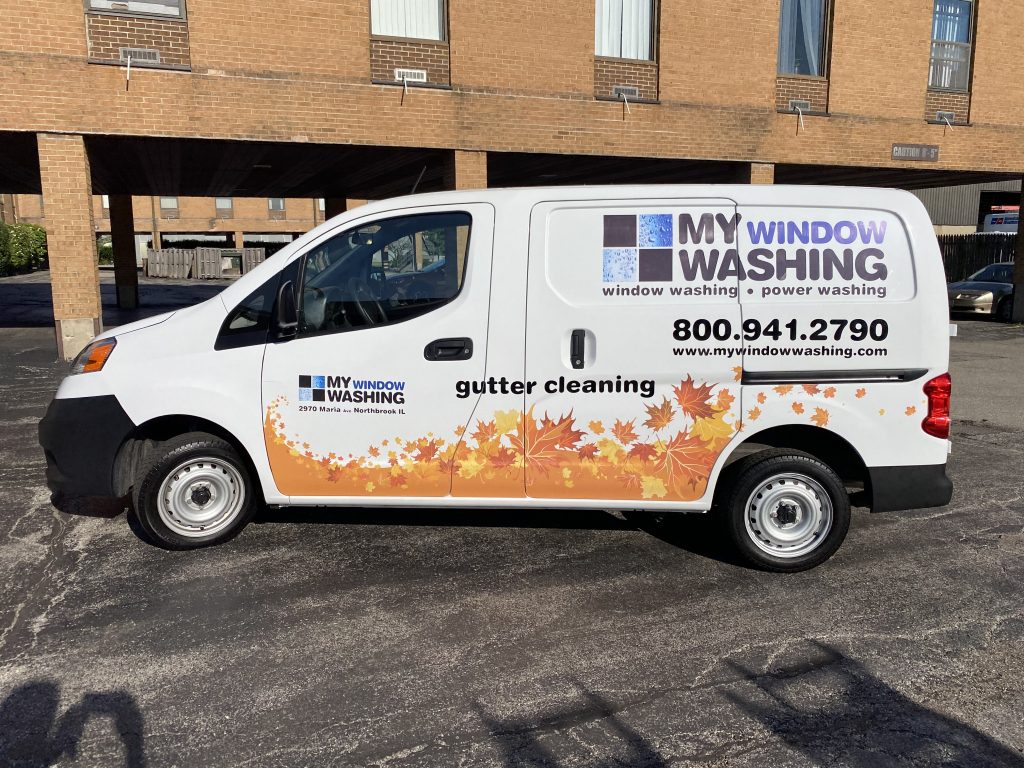
When it comes to window washing, you have two options—tackling it yourself or hiring a professional. While DIY cleaning can be cost-effective and satisfying, there are times when calling in the pros is the smarter choice. Understanding the benefits of each can help you decide which approach works best for your needs.
When DIY Window Washing Makes Sense
If your windows are easily accessible and you have the right tools, washing them yourself can save money and keep your home looking great between deep cleans. A good squeegee, microfiber cloth, and the right cleaning solution are usually enough to get the job done. DIY is ideal for regular maintenance, especially for interior windows or smaller exterior panes that don’t require ladders.
However, window washing becomes challenging when dealing with second-story windows, stubborn stains, or large glass surfaces that require specialized equipment.
When to Call a Professional
If your windows are high, difficult to reach, or covered in tough grime like hard water stains or mineral buildup, a professional window cleaning service is worth considering. Experts use industrial-grade cleaners, extendable tools, and safety equipment to handle the job quickly and efficiently.
Businesses, storefronts, and homes with large windows also benefit from professional cleaning, ensuring a polished, streak-free finish without the hassle.
Whether you opt for DIY or hire a pro, regular window washing keeps your home looking its best while protecting your glass from long-term damage. Up next, we’ll wrap things up with key takeaways and expert advice for maintaining spotless windows year-round.
Keep Your Windows Sparkling Year-Round
Achieving streak-free, crystal-clear windows isn’t as complicated as it seems—if you have the right tools, techniques, and cleaning schedule. Window washing is more than just an aesthetic upgrade; it enhances natural light, improves energy efficiency, and extends the life of your windows.
By using the proper cleaning solutions, mastering the S-pattern squeegee technique, and adjusting your approach for indoor vs. outdoor windows, you can achieve professional-level results at home. Regular cleaning—at least twice a year—helps prevent buildup, but if you have hard-to-reach windows or stubborn grime, calling in a professional might be the best solution.
The key to effortless window washing is staying consistent. Whether you’re maintaining your home’s curb appeal, preparing for seasonal changes, or just looking to enjoy a spotless view, a little effort goes a long way.
Now that you have the pro tips and best practices, it’s time to put them into action! Try these techniques for your next window cleaning session, and if you’re looking for expert help, consider hiring a professional for a streak-free shine without the hassle. Ready to enjoy crystal-clear windows? Get started today!




